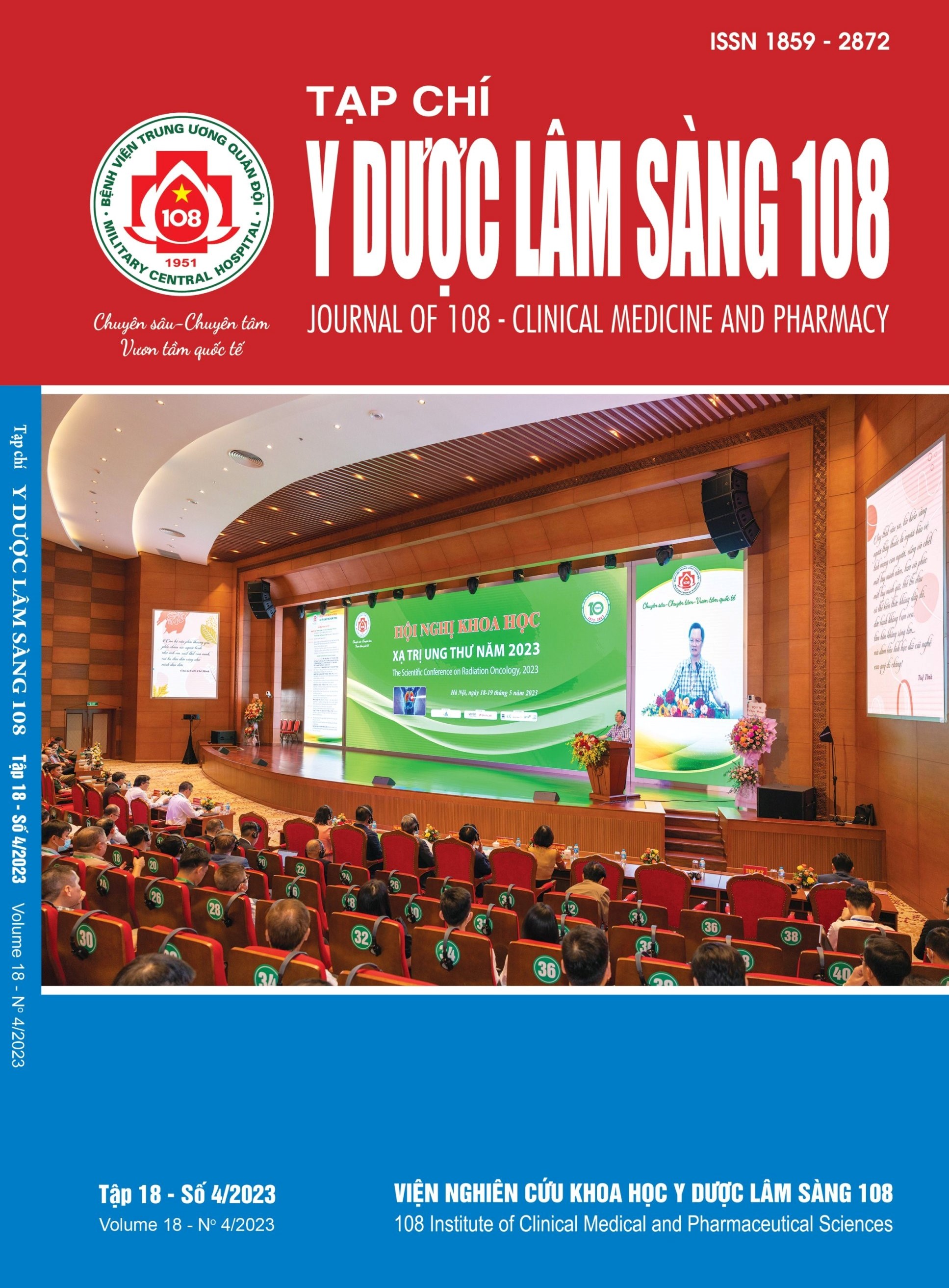Evaluation of the results of rhinoplasty by total autologous costal cartilage at Cho Ray Hospital
Main Article Content
Keywords
Abstract
Objective: To assess the results of rhinoplasty by autologous costal cartilage (the dorsum is shaped by crushed and finely cut costal cartilage) at Cho Ray Hospital. Subject and method: Retrospective method describing a series of cases. Subjects are customers over 18 years old who are indicated for rhinoplasty with autologous costal cartilage at Cho Ray Hospital's Aesthetic & Plastic Surgery Department from June 2020 to July 2022. The autologous costal cartilage is sliced to reconstruct the supporting frame of the nose, shaping the grafts, the rest is crushed, finely cut and inserted into the dorsum. Surgical outcome was evaluated 2 week, 1-3 months and 6 months - 1 year after surgery. Result: 259 patients, in which 57 male patients and 202 female patients, the youngest age was 18 years old and the oldest was 58 years old. There were 48.69% of patients who had rhinoplasty once, 7.34% had rhinoplasty 2 or more times and 43.59% had just rhinoplasty the first. 56.03% of patients had revision rhinoplasty, 15.44% due to congenital anomalies, 15.05% due to trauma and 13.48% congenital low nose. 100% of patients participating in the study used autologous costal cartilage as septal extension graft; 59.8% had cartilage membrane cover on tip of the nose which thin skin; about dorsum: 1.54% used temporal muscle scales to wrap the crushed and finely cut costal cartilage, 4.25% used abdominal wall muscle scales, 94.21% directly injected. Supporting grafts: 100% use Cap graft, 66.8% use Shield graft and 33.2% use Spreader graft. The patients had a significant change in the nasal anthropometric indices and 100% of the patients kept the normal nasal ventilation function. No early complications and distant complications of surgery were recorded. After 3 months of surgery 86.48% (224 patients) were very satisfied with the surgical results, 13.51% (35 patients) were satisfied; after 6 months of surgery 92.66% (240 patients) were very satisfied with the surgical results, 7.33% (19 patients) were satisfied, and no patient was dissatisfied with the surgical results. There were no cases of cartilage loss after 1 year. Conclusion: Rhinoplasty with structural method by autologous costal cartilage brings good results to the patient. Autologous costal cartilage is a safe and effective material in rhinoplasty, especially with nose correction, trauma, and congenital malformations.
Article Details
References
2. Daniel RK (2018) Rhinoplasty Anatomical and Clinical Atlas. University of California Irvine Newport Beach California USA.
3. Toriumi DM (2019) Structure rhinoplasty: Lessons learned in 30 years. DMT Solutions Chicago.
4. Jang YJ (2018) Rhinoplasty and Septoplasty. Koonja Publishing Inc.
5. Namgoong S, Kim S, Suh MK (2020) Multilayered costal cartilage graft for nasal dorsal augmentation. Aesthetic Plast Surg.
6. Park JH, Jin HR (2012) Use of autologous costal cartilage in Asian rhinoplasty. Plast Reconstr Surg 130(6): 1338-1348.
7. Suh MK (2018) Atlas of Asian Rhinoplasty. JW Plastic Surgery Center Seoul.
8. Surgeons ASOP (2018) Plastic surgery statistics report. ASPS National Clearinghouse of Plastic Surgery Procedural Statistics.
9. Wilson GC, Dias L, Faris C (2017) A comparison of costal cartilage warping using oblique split vs concentric carving methods. JAMA Facial Plast Surg 19(6): 484-489.
 ISSN: 1859 - 2872
ISSN: 1859 - 2872
